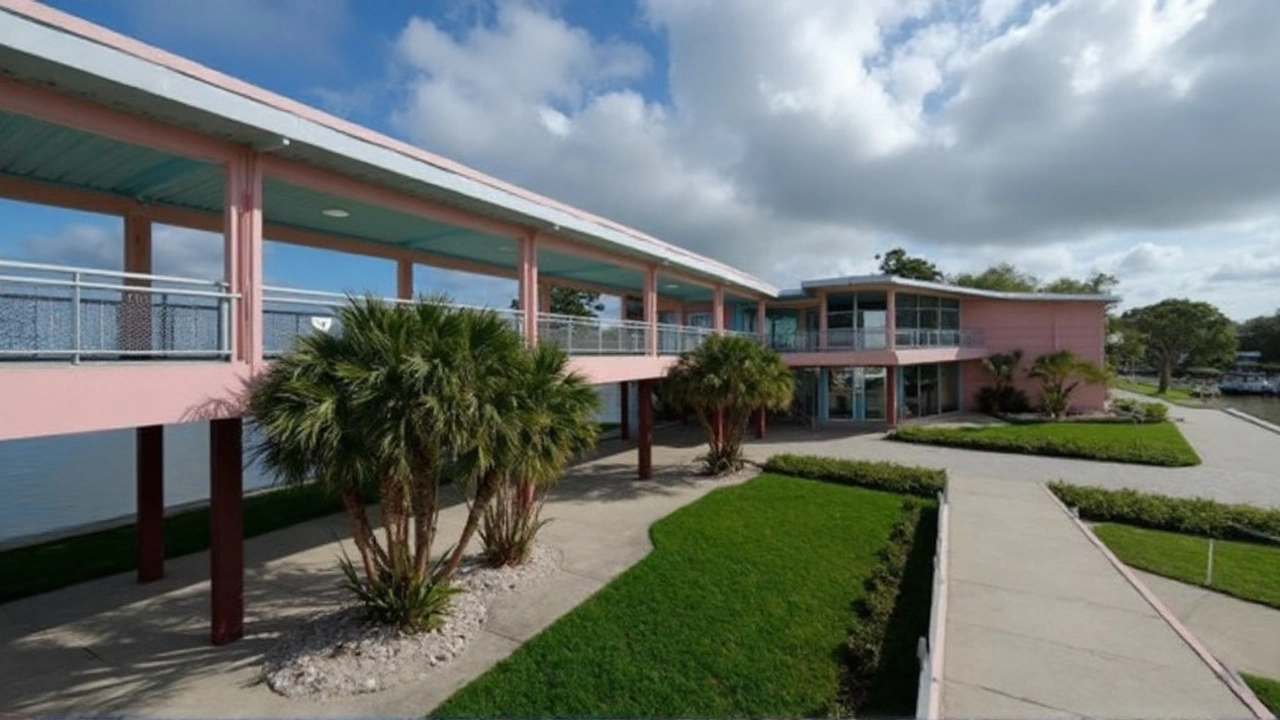The feather boom that turned Florida into a killing ground
Feathers were once fashion’s hottest currency. At the turn of the 20th century, plumes from egrets, herons, spoonbills, and cormorants commanded high prices in the New York millinery trade, especially the delicate “aigrettes” taken from birds during breeding season. Contemporary reports put the price for prime egret plumes at more than $20 an ounce, and in flush months even higher. With money like that on the table, Florida’s rookeries became targets. Boats slipped through the mangroves at night. Hunters waited until birds returned to nests, then shot into the colonies. Adults died. Chicks starved. Rookeries, once deafening, went silent.
Florida lawmakers had outlawed the killing of many nongame birds, but the law was only as strong as the person willing to enforce it. In the Everglades, that person turned out to be a soft-spoken local who knew the waters better than anyone—Guy Bradley.
Bradley wasn’t born a crusader. He entered the world in Chicago in 1870 and moved south as a child when his family settled at the far end of the peninsula, near present-day Flamingo. He grew up on skiffs and shell banks, guiding fishermen and, like many boys of his time, occasionally guiding plume hunters too. Over the years he watched colonies shrink. Birds that had painted the sky white during nesting season vanished from islands he’d known since boyhood. By his early thirties, he’d had enough. In 1902, the Florida Audubon Society—backed by the American Ornithologists’ Union—hired him as the Everglades’ first resident bird warden. Monroe County deputized him, handed him a badge, and told him to hold the line.
The job description was simple and impossible: protect wading birds across a territory stretching from the Ten Thousand Islands on the west coast, through Florida Bay and into the Keys. He patrolled alone at first in a small boat, sleeping rough and following rumor as much as evidence. He carried a nickel-plated .32-caliber pistol, kept a careful log, and leaned on the law: fines of $15 could hurt a working man’s pocket, and the stigma of being called a poacher carried weight in close-knit communities. He also knew when to recruit help. He convinced Audubon to bring on his brother and brother-in-law as deputies, building a small unit that could cover more water and more rookeries.
Bradley’s effectiveness didn’t come from bluster. It came from relationships and persistence. He met with Seminole and Miccosukee leaders and built trust, enlisting them in the push to leave nesting colonies undisturbed. He talked to fishermen at docks and storekeepers along the coast. He warned hunters that the days of shooting into rookeries were over. Word spread that the new warden didn’t scare easy and didn’t carry grudges. Many locals came to see bird protection as common sense: no birds meant no spectacle, no visitors, and a broken ecosystem on which fishing families depended.
Still, the work carried a target on his back. Ornithologists visiting the Everglades in 1904 noticed that locals were starting to respect the new laws, but they also noticed something else: a growing hostility among hard cases who resented being told what they couldn’t shoot. Bradley deflected threats and dodged more than one bullet. Friends warned him he’d be killed. He shrugged it off and kept patrolling.

A lone warden, a fatal encounter, and a movement ignited
On July 8, 1905, the warnings caught up with him. Near Flamingo, Bradley came upon a cormorant colony and a familiar name: Walter Smith, a notorious plume hunter, with his sons. Cormorants weren’t just any birds—they were on nests. That mattered to Bradley. Breeding birds were the backbone of recovery; shoot them and you wiped out the next generation too. He moved to make an arrest. Shots cracked. Bradley was hit with a rifle round. He was 35 years old.
What happened next added cruelty to murder. Smith and his sons hauled the warden’s body into a boat and set it adrift on the Gulf. The gesture was plain: out here, in this maze of islands and flats, law was what a man could enforce with his own hands. Locals recovered the body. Monroe County brought charges. In court, Smith claimed self-defense, alleging that Bradley fired first. The state showed that the warden’s service pistol hadn’t been discharged. Even so, the jury acquitted Smith and his sons.
Bradley’s death hit the conservation world like a lightning strike. Newspapers picked up the story. Audubon societies wrote letters and raised funds. Ornithologists who had pushed for bird-protection laws suddenly had a martyr whose work was painfully clear: a living rookery patrolled by a warden, a dead one left to scavengers. Bradley’s killing became proof that laws without enforcement were just words on paper.
Change followed, not overnight but steadily. Florida tightened protections and invested more energy in wardens. Nationally, momentum built for stronger wildlife laws that could reach across state lines and choke off the trade itself. The Lacey Act, already on the books since 1900, gave federal teeth to cases involving interstate commerce in illegally taken wildlife. Over the next decade, campaigns led by Audubon and allied scientists pushed for broader protections. In 1918, the Migratory Bird Treaty Act ended the commercial slaughter of most native birds and made plume hunting a relic. It didn’t bring Bradley back, but it carried his logic: protect colonies, and birds rebound.
His story also reshaped how Americans understood the Everglades. At the time, the region was branded as empty swamp—good for drainage projects and little else. Bradley’s patrol logs, and the outrage over his death, helped spotlight it as a living, intricate ecosystem: mangrove keys bristling with nests, sawgrass marsh thick with life, spoonbills glowing pink against evening clouds. Decades later, when Everglades National Park was established, the place he guarded finally had the status its wildlife deserved.
Bradley’s grave didn’t last—storms washed it away from Cape Sable Beach—but his name stuck to maps and buildings. Everglades National Park’s Visitor Center at Flamingo bears his name. Wildlife officers around the country know his story. Since 1988, the National Fish and Wildlife Foundation has given a Guy Bradley Award to conservation officers whose work stands out under pressure. In a profession where officers still patrol alone, often far from backup, the award recognizes what Bradley embodied: patience, restraint, and the courage to say no when money and custom say yes.
It’s easy to forget how close many species came to disappearing from Florida’s skies. Photographs from the era show women’s hats exploding with plumes and entire colonies leveled in a season. Spoonbills, once ravaged for their vivid feathers, retreated to a few hidden rookeries. Great egrets, targeted for their breeding plumes, were hammered during nesting season when their aigrettes were the longest. The math was brutal. Kill the adults on the nest and you didn’t just remove two birds—you erased an entire brood. That’s what Bradley understood on the water in 1905, and what modern conservation codifies in law today.
The work he started never really ends. Poaching hasn’t vanished; it’s evolved. Today’s officers deal with illegal reptile trade, night-time netting in protected zones, nest disturbance by drones, and online marketplaces that move contraband faster than any small boat. They still rely on tips from fishing guides, tribal partners, and waterfront communities. They still write tickets that sting but also try to change habits before a rifle shot makes it a felony. And they still face risks that don’t make headlines until something goes wrong.
There’s another thread in Bradley’s legacy that often gets missed: his ability to bring people in rather than push them away. He wasn’t lecturing from a city desk; he lived where he patrolled. He courted allies in the Seminole and Miccosukee communities, listened to fishermen who worried about closed rookeries, and understood how loss of birds rippled through a food web that started on the flats and ended on a dinner plate. That human network—dockside conversations, shared sightings, a quiet warning passed across a counter—was as important as any fine.
His badge didn’t protect him. But it changed what that badge could mean in America. Before Bradley, a warden in a skiff was an oddity. After Bradley, “game warden” became a job people recognized: part cop, part naturalist, part community mediator. Agencies built training programs. Courts came to see nest-robbing as theft of public trust, not a side hustle. And average citizens—newspaper readers then, social media users now—learned to connect a plume on a hat to a dead rookery in Florida.
Walk the edge of Florida Bay at sunrise and you can see the result. Great egrets lift from mangroves like scraps of paper. Cormorants arrow past in tight formation. Roseate spoonbills comb the shallows with those odd, beautiful bills. None of it is guaranteed. Hurricanes still tear up the coast. Development squeezes the marsh. Water quality swings with politics. But the idea that birds on nests are off-limits—that their future belongs to all of us—feels nonnegotiable. That idea has a name attached to it, and a date: July 8, 1905.
Bradley left behind a wife, two young children, parents, and a brother who had stood watch beside him. He also left a lesson that outlived the millinery craze and the jurors who let his killer walk. Laws matter. So do the people who carry them into places where a badge is just another piece of metal. In the Everglades, a century ago, one man did that with a pistol on his hip, a boat under his boots, and a stubborn belief that a rookery full of life was worth more than any plume on any hat.
